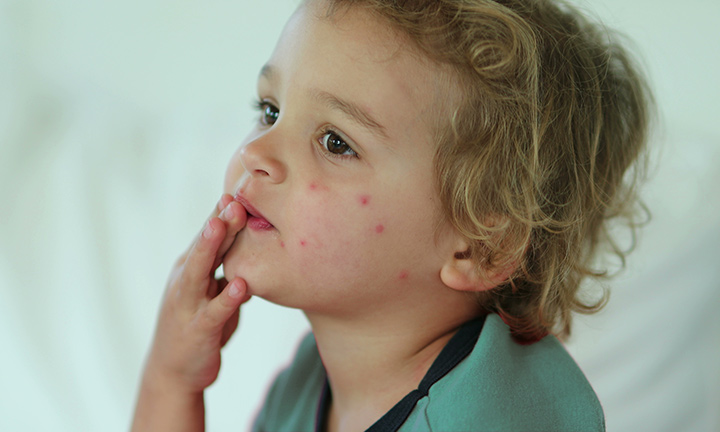Bed bugs (Cimex lectularius) have resurfaced as a significant public health concern, particularly in urban environments where their prevalence has soared in recent years. Among the populations vulnerable to the adverse effects of these nocturnal pests, infants and young children represent a particularly sensitive group due to their delicate skin and developing immune systems.
This article aims to provide a comprehensive overview of bed bug bites specifically in babies, focusing on the identification of symptoms and effective treatment strategies. By analyzing the unique physiological responses of infants to bed bug bites, we can better equip caregivers and health professionals with the knowledge necessary to mitigate the risks associated with infestations. In doing so, we hope to foster a clearer understanding of the implications of bed bug exposure in young children and promote proactive measures to safeguard their health and well-being.
Identification of Bed Bug Bites in Infants and Young Children
Identifying bed bug bites in infants and young children requires careful observation, as their skin can react differently compared to adults. Typically, bed bug bites appear as small, red welts that may be surrounded by a halo of redness. These bites often cluster in groups and can be seen in various areas such as the arms, legs, and other exposed skin while sleeping. It is crucial to note that the severity of reactions can vary widely among individuals; some children may show minimal signs, while others may experience significant swelling and discomfort.
Parents and caregivers should look for specific indicators to confirm bed bug bites, including:
-
- Itching and irritation: Affected areas may become itchy, prompting the child to scratch, which can lead to secondary infections.
-
- Clustered patterns: Bites are often found in linear arrangements, typically along skin creases.
-
- Timing of bites: Bed bugs are nocturnal, so bites that appear overnight often point to this pest as the culprit.
-
- Presence of physical signs: Look for dark spots on bedding or furniture, as these can indicate bed bug excrement.
| Signs of Bed Bug Bites | Description |
|---|---|
| Itchiness | Red, swollen areas prone to intense itching. |
| Groupings | Bites often appear in clusters or lines. |
| Skin Reaction | Varies from mild irritation to severe inflammation. |
Symptoms and Behavioral Indicators of Bed Bug Infestations
Identifying a bed bug infestation involves recognizing both the physical symptoms and behavioral changes in affected individuals. Commonly, victims of bed bug bites may exhibit **red, itchy welts** on the skin, often appearing in clusters or linear arrangements. These marks typically arise on exposed areas during sleep, such as the arms, legs, and face. In addition to bites, other physical signs of a bed bug presence include **tiny blood stains** on sheets, **dark spots of excrement** on bedding or walls, and even the shedding of bed bug skins. It’s crucial to observe such signs closely, as they are indicative of a more extensive infestation that may require immediate attention.
Behaviorally, infants and young children may display increased **irritability** or **restlessness**, especially during nighttime hours. Parents should also be vigilant for signs of **unusual scratching** or rubbing of the skin, which could indicate discomfort from bites. Monitoring sleep patterns is essential, as disruptions could signal the presence of these pests. It can be beneficial to maintain a consistent check for bed bugs in sleeping quarters, as early detection can significantly mitigate the infestation’s impact. Below is a table summarizing the key symptoms and behavioral indicators associated with bed bug infestations:
| Symptom/Indicator | Description |
|---|---|
| Red, itchy welts | Marks typically found on exposed skin, often in clusters. |
| Blood stains | Small red spots on bedding from crushed bugs. |
| Dark spots | Excrement visible on sheets or in hiding spots. |
| Increased irritability | Changes in behavior, particularly at night. |
Effective Treatment Strategies for Bed Bug Bites in Babies
When treating bed bug bites on babies, it is essential to prioritize their comfort and safety. Begin by gently cleaning the affected area with mild soap and lukewarm water to minimize the risk of infection. Following this, consider applying a cool compress to alleviate itching and swelling. Antihistamines such as diphenhydramine can be administered to relieve itching, but always consult a pediatrician for appropriate dosages. If the bites are particularly bothersome, a thin application of over-the-counter hydrocortisone cream may also provide relief; however, it should only be used under the guidance of a healthcare professional.
In addition to topical treatments, it is crucial to monitor the bites for any signs of infection, such as increased redness, warmth, or pus. If these symptoms occur, seek medical assistance promptly. To prevent further exposure, conduct a thorough inspection of the baby’s sleeping environment, including bedding and furniture, to identify and eliminate any potential bed bug habitats. Keeping the sleeping area clean and using protective mattress covers can significantly reduce the likelihood of future bites. Here’s a simple reference table for easy understanding of common treatment options:
| Treatment | Description |
|---|---|
| Gentle Cleansing | Wash with mild soap and water to prevent infection. |
| Cool Compress | Apply to reduce swelling and discomfort. |
| Antihistamines | Provide relief from itching; consult a doctor for dosage. |
| Hydrocortisone Cream | Reduces inflammation; use under healthcare guidance. |
Preventative Measures to Protect Infants from Bed Bug Exposure
To ensure the safety and well-being of infants, it is crucial to implement effective preventative measures against bed bug exposure. Begin by regularly inspecting sleeping areas, including cribs and bedding, for any signs of bed bugs or their droppings. If you are traveling, consider using protective encasements for the infant’s sleeping area and luggage. Additionally, maintain cleanliness by frequently washing and drying bedding and clothing on high heat, which can help eliminate any potential pests. Moreover, it is advisable to **limit clutter** around the infant’s sleeping area, as bed bugs thrive in hidden spaces.
Engaging in proactive communication with caregivers and house guests about bed bug awareness is vital. Encourage visitors to inspect their belongings before entering your home, especially if they have recently traveled. Implementing **sealed storage solutions** for baby items and regular vacuuming of carpets, rugs, and upholstered furniture can mitigate risks. In case of suspected infestation, consult pest control professionals immediately. Below is a table summarizing effective strategies:
| Preventative Measures | Description |
|---|---|
| Regular Inspections | Check sleeping areas for signs of bed bugs. |
| Protective Covers | Use encasements for cribs and luggage while traveling. |
| Heat Treatment | Wash bedding and baby clothes on high heat. |
| Limit Clutter | Keep sleeping areas organized and free of excessive items. |
| Communication | Discuss bed bug awareness with caregivers and guests. |
Q&A
Q&A: Bed Bug Bites on Babies: Identification and Treatment
Q1: What are bed bugs and why are they a concern for infants?
A1: Bed bugs, scientifically known as Cimex lectularius, are small, nocturnal insects that feed on the blood of humans and animals. They are particularly concerning for infants due to their vulnerable skin and immune systems. Babies have thinner skin compared to adults, making them more susceptible to irritation and potential infections from bites. Furthermore, an infant’s inability to articulate discomfort renders them unable to communicate their distress, necessitating careful observation by caregivers.
Q2: How can one identify bed bug bites on babies?
A2: Bed bug bites typically present as small, red, itchy welts that may appear in clusters or lines, often on exposed areas of the skin such as the face, neck, and arms. In babies, these bites can sometimes be mistaken for other conditions like eczema or mosquito bites. Key identification signs include their distinctive scratch-like appearance, the timing of bites (commonly occurring at night), and the presence of bed bugs or their excrement near the sleeping area. Caregivers should remain vigilant for signs of bed bug infestations, such as dark spots on bedding or the presence of live bugs.
Q3: What immediate steps should parents take if they suspect bed bug bites?
A3: Upon suspicion of bed bug bites, parents should first confirm the presence of bed bugs by inspecting sleeping areas, including mattresses and bed frames. If bites are identified, they can alleviate discomfort through gentle cleaning of the affected areas with soap and water. Applying a cold compress may also help reduce swelling and relieve itching. It is essential to avoid using over-the-counter creams or medications without consulting a pediatrician, as infants’ skin may react differently.
Q4: What are the potential complications associated with bed bug bites in infants?
A4: While bed bug bites are generally not known to transmit disease, they can lead to several complications, particularly in infants. The most common issue is secondary bacterial infections resulting from excessive scratching. This can necessitate medical attention and antibiotic treatment. Additionally, if an infant has an allergic reaction to the bites, symptoms may include increased swelling, hives, or even anaphylaxis in rare cases, which requires immediate medical intervention.
Q5: How should a caregiver approach treatment if the bites appear severe?
A5: If the bites on an infant appear severe or show signs of infection (such as pus, increased redness, or swelling), it is crucial to seek medical advice promptly. A pediatrician may prescribe antihistamines to reduce allergic reactions or topical corticosteroids to alleviate inflammation. In cases of infection, antibiotics may be necessary. Caregivers should document the appearance of the bites and any accompanying symptoms to aid healthcare professionals in assessing the situation.
Q6: What preventive measures can be taken to protect infants from bed bug infestations?
A6: Preventive measures are essential in safeguarding infants. Regularly inspecting and cleaning bedding and sleeping areas can help identify any early signs of infestation. When traveling, caregivers should thoroughly check hotel rooms for signs of bed bugs, such as adult bugs or shedding skin. In addition, using protective mattress encasements can provide a barrier against bed bugs. Educating oneself about the signs of bed bugs and maintaining vigilance in environments prone to infestations are crucial steps in protecting infants from these pests.
Q7: Are there any long-term effects of bed bug bites in infants?
A7: Long-term effects from bed bug bites are rare but can occur, particularly if infections develop. In most cases, bed bug bites heal without lasting consequences. However, if left untreated, secondary infections can lead to scarring or a heightened sensitivity to subsequent bites. There may also be psychological effects due to the stress and anxiety related to infestations, especially if recurrent bites occur. Continued education and monitoring are vital to ensure both the physical and emotional well-being of the infant.
Conclusion:
Vigilance and prompt action are essential when addressing bed bug bites in infants. By understanding identification methods, appropriate treatments, and preventive strategies, caregivers can safeguard their children from the discomfort associated with these pests.
Wrapping Up
understanding bed bug bites on infants is crucial for both parents and caregivers. Early identification of the characteristic signs and symptoms—such as the distinctive bite patterns and associated reactions—can significantly influence the management and treatment approach. Given the potential for more severe reactions in vulnerable populations like babies, timely intervention is paramount. When faced with a suspected infestation, it is advisable to consult medical professionals for accurate diagnosis and treatment options. Moreover, comprehensive preventive measures should be prioritized to mitigate the risk of exposure in domestic environments. By fostering awareness and promoting proactive strategies, we can safeguard our youngest and most susceptible family members from the discomfort and health implications associated with bed bug bites. The impact of these pests extends beyond mere irritation; it encompasses broader concerns around well-being and hygiene, thereby necessitating vigilant attention and action from all stakeholders involved.


